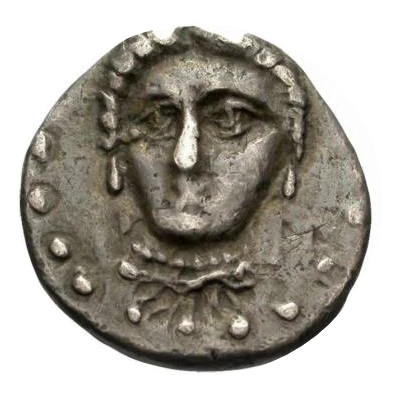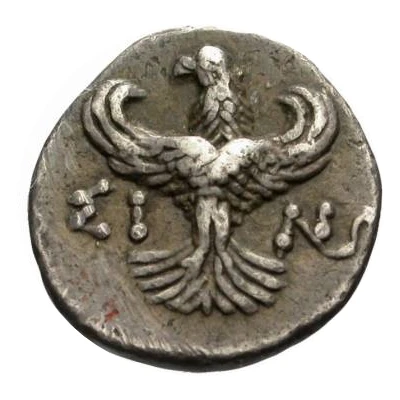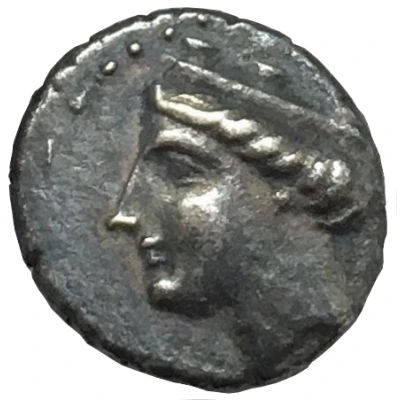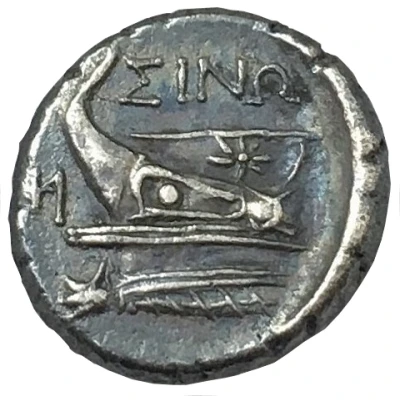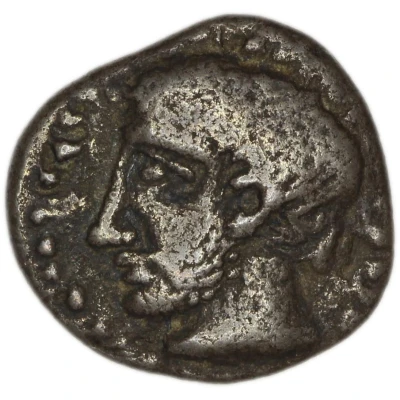
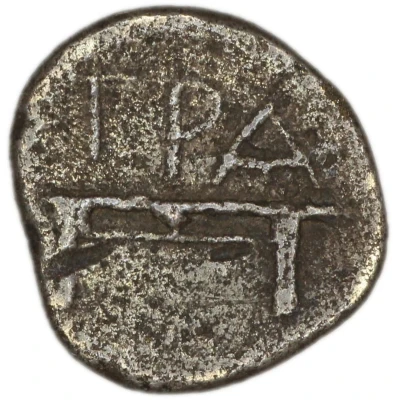

© Trustees of the British Museum
Trihemiobol 400 BC - 350 BC
| Silver | 1.37 g | 13 mm |
| Issuer | Sinope (Paphlagonia) |
|---|---|
| Type | Standard circulation coin |
| Years | 400 BC - 350 BC |
| Value | Trihemiobol (¼) |
| Currency | Drachm |
| Composition | Silver |
| Weight | 1.37 g |
| Diameter | 13 mm |
| Shape | Round (irregular) |
| Technique | Hammered |
| Demonetized | Yes |
| Updated | 2024-10-10 |
| Numista | N#358235 |
|---|---|
| Rarity index | 97% |
Reverse
Table
Script: Greek
Lettering: TPA
Interesting fact
The Trihemiobol coin from Sinope (Paphlagonia) was used as a form of currency in ancient Greece, specifically in the 4th century BC. Its name "Trihemiobol" comes from the Greek words "tri" meaning three, "hēmi" meaning half, and "bolos" meaning throw, which refers to the coin's value being equivalent to three obols, or half of a drachma. This coin was made of silver and weighed 1.37 grams, making it a valuable and widely used currency during its time.
